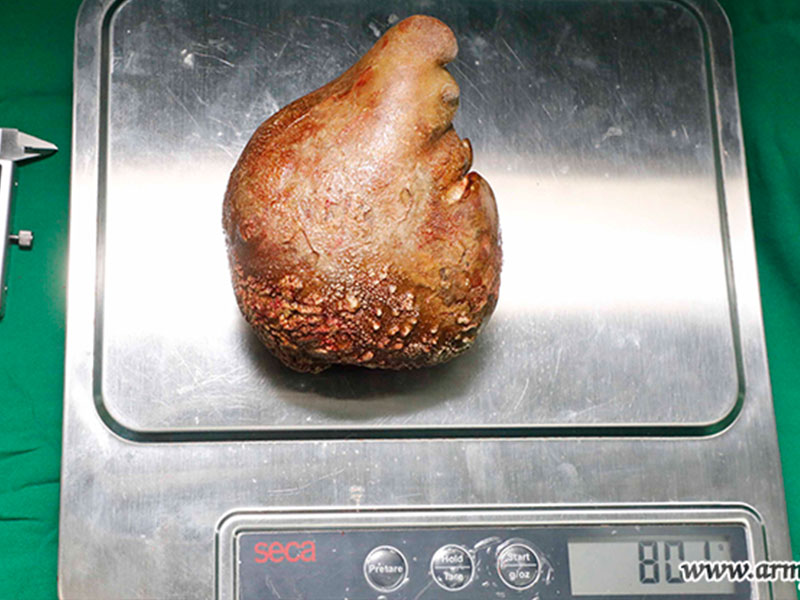The world’s largest kidney stone, which was removed at the Colombo Army Hospital in Colombo, has been registered as a world record by Guinness World Records
The kidney stone removed by the Army Hospital Doctors in Sri Lanka was the size of a grapefruit, as long as a banana, and as heavy as four hamsters, according the CNN
At 13.372cm long and weighing 801 grams, the kidney stone broke two world records when it was removed by Sri Lankan Army doctors in June 2023
The kidney stone extracted from a retired soldier Canistus Coonghe and the stone was deeper than his kidneys
Previously, the records were 13cm for length, set in India in 2004, and 620g for weight, set in Pakistan in 2008, according to Guinness World Records.
How do kidney stones form?
Kidney stones are pesky little things formed in the urinary tract, most commonly in the kidneys themselves. Their formation, while not always straightforward, boils down to two main factors: concentration and crystallization.
Concentration: Imagine your urine as a crowded party. When there’s enough space to move around freely, crystals (the party guests) are less likely to bump into each other and stick together. But when the party gets packed (less water), the guests are more likely to collide and form clumps.
Similarly, when your urine is concentrated due to dehydration, certain medical conditions, or dietary factors, the minerals and other substances in it (like calcium, oxalate, and uric acid) have a higher chance of coming together and forming tiny crystals.
Crystallization: Now, these tiny crystals aren’t kidney stones yet. They just represent the first step. For an official stone to form, these crystals need to stick together. This can happen when your urine lacks enough of certain substances that normally prevent them from clumping. Additionally, some medical conditions or medications can also promote crystal growth and aggregation.
Once these factors combine, the tiny crystals get tangled and build upon each other, eventually forming a hard, painful mass, the dreaded kidney stone.
Here are some additional factors that can increase the risk of kidney stone formation:
- Diet: High intake of oxalate-rich foods (spinach, rhubarb, and soya products), salt, animal protein, and fructose-sweetened drinks can contribute.
- Medical conditions: Certain bowel diseases, infections, and metabolic disorders can influence stone formation.
- Family history: Having a family history of kidney stones puts you at higher risk.
- Medications: Some medications, like diuretics and calcium-based antacids, can increase the risk.
- Lifestyle: Lack of physical activity, obesity, and excessive sweating can also play a role.







